A domain name is a string of characters uniquely identifying a website or web page.
A domain name identifies an Internet Protocol [IP] resource, such as a personal computer that connects to the Internet, a server computer that hosts a website, or any other Internet-based service.
If you are already a domain owner, here is a how-to guide on using a domain name and making your online presence more robust and secure.
People use it to access a website or web page by typing it into their browsers.
The hierarchy organizes domain names, with the top level called the “root.”
For example, “softkeyword.com” is a top-level domain (TLD) that represents a specific website, while “www.softkeyword.com” is a subdomain that points to a particular web page on the website.
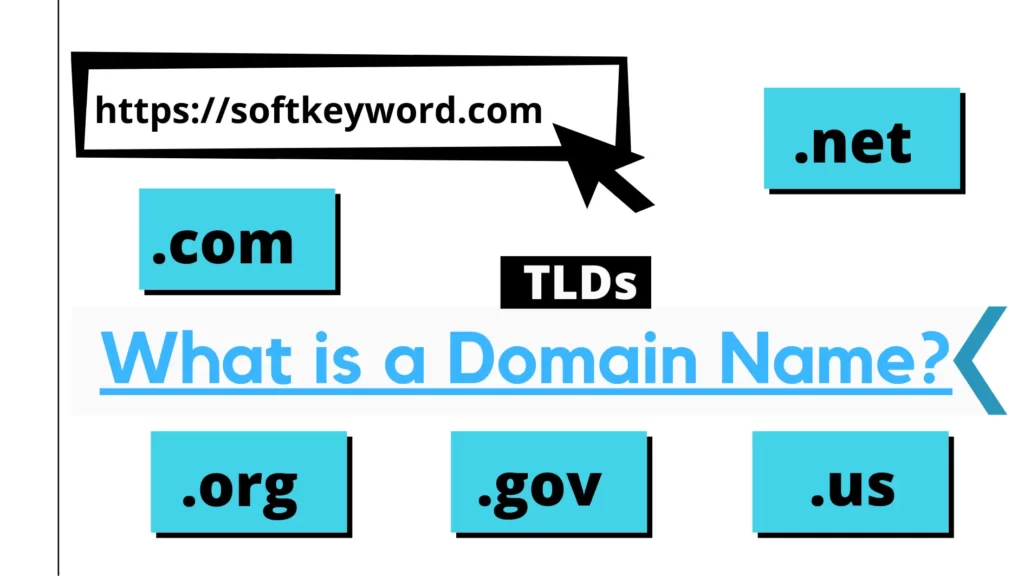
To use a domain name, you must register it with a domain name registrar, a company that manages the allocation and registration of domain names.
Once you have registered a domain name, you can create a website or email address or redirect traffic to another website or web page.
As of 2017, 330.6 million domain names had been registered.
Let’s understand the domain name with a simple example to cement it in your mind.
Domain Name example
You may want to know what an example of a domain name is. It’s straightforward to understand with an example.
A domain name is a short, easy-to-remember term linked to a physical Internet IP address.
Domain names identify Internet resources, such as computers, networks, and services, with a text-based label that is easier to memorize than the numerical addresses used in Internet protocols [e.g., softkeyword.com].
The ‘SoftKeyword.com’ may point to the physical address 212.1.211.28.

Google.com and Wikipedia.org are two examples of such domain names. Host names appear as a component in Uniform Resource Locators (URLs) for Internet resources such as websites.
Now, let’s understand the difference between the domain and URL.
How do they differ?…
Difference between URL and domain name
They appear similar, yet they differ in some ways.
Domain Name
It is a unique name that identifies a website on the internet.
It comprises a series of letters and numbers followed by a top-level domain (TLD) such as .com, .net, or .org. For Example, “softkeyword.com” is a domain name.
- A domain name is a simplified version of a technical IP address.
- The domain name is the short version.
- A domain name is the name of the organization/individual entity with top-level internet domains like [dot]com, [dot]edu, [dot]gov, etc.
- A delimiter character separates the labels (sub-domain, domain suffix), and the naming scheme is hierarchical.
- For Example, SoftKeyword[dot]com is a domain name

URL
The URL stands for “Uniform Resource Locator.” A URL is a string of characters that identifies the location of a resource on the internet, such as a webpage or an image.
A URL typically comprises several parts, including the protocol, such as “http” or “https,” Like “softkeyword.com,” and the path to the resource, like “/index.html.”
- A URL is a webpage’s whole internet address.
- A URL contains more information than a domain name, and its components include a method, the hostname (domain name), port, path, etc.
- For Example, https://softkeyword.com is a URL.

The domain name is an integral part of a URL because it specifies the location of the website on the internet.
When you enter a domain name into a web browser, the browser looks up the server’s IP address where the website is hosted and then retrieves the webpage from that server.
In short, a domain name locates a website, while a URL specifies a resource’s exact location on the internet. Isn’t it awesome…
That’s the truth, and you’ll be surprised to learn about the most expensive domain names
Which I will show you right now.
Are you excited to know that…?
Ready…?
Most Expensive Domain Names
You have seen the regular-priced domain names, but have you seen the domain names sold for millions of dollars?
If not, you can see the most expensive domain name list sold for millions of dollars here.
According to GoDaddy data, here are the 25 most expensive domain names sold for millions of dollars.
- CarInsurance.com — $49.7 million
- Insurance.com — $35.6 million
- VacationRentals.com — $35 million
- PrivateJet.com — $30.18 million
- Voice.com — $30 million
- Internet.com — $18 million
- 360.com — $17 million
- Insure.com — $16 million
- Fund.com — £9.99 million
- S*x.com — $14 million*
- S*x.com — $13 million
- Hotels.com — $11 million
- Porn.com — $9.5 million
- Shoes.com — $9 million
- P*rno.com — $8.8 million
- Fb.com — $8.5 million
- We.com — $8 million
- Business.com — $7.5 million
- Diamond.com — $7.5 million
- Beer.com — $7 million
- Z.com — $6.8 million
- iCloud.com — $6 million
- Israel.com — $5.8 million
- Casino.com — $5.5 million
- Slots.com — $5.5 million
Note: * The s*x[dot]com domain sold twice [once in 2005 for $14 million and again in 2010 for $13 million].
So, these were the most valuable domain names.
Now, let’s move to the DNS… What is that?
Let’s see… [Don’t worry. It’s just a server system]
What is a domain name system[DNS]?
The domain name server is also called a domain name system. (DNS) DNS is a critical part of the internet’s infrastructure. ICANN manages it. ICANN stands for the Internet Council of Assigned Names and Numbers.
How does the domain name system work?
A DNS is like an index for a book in terms of how it stores and retrieves website information.
The DNS allows us to navigate the web using domain names like google.com instead of remembering and using IP addresses like 172.217.3.206, which we will learn more about in the domain name example section.
You can also learn more about DNS from the Cloudflare guide on DNS, which includes domain name system examples.
With the DNS, you should also know Domain Spoofing.
This is what we will learn right now…
What is Domain spoofing?
In general, domain spoofing is a phishing attack that falsifies or misrepresents an internet domain name.
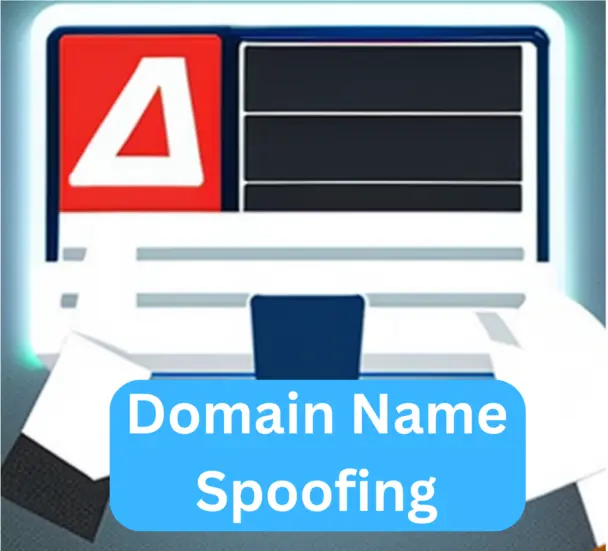
Hackers trick people into opening emails from unknown senders or visiting suspicious websites.
In addition to website and email spoofing attacks, hackers can exploit any service that relies on domain resolution. You can see several domain-spoofing activities below.
Typosquatting, also called “URL hijacking,” a “sting site,” or a “fake URL,” is a form of cyber-squatting and possibly brandjacking that relies on mistakes such as typos made by Internet users when inputting a website address into a web browser or composing an email address.
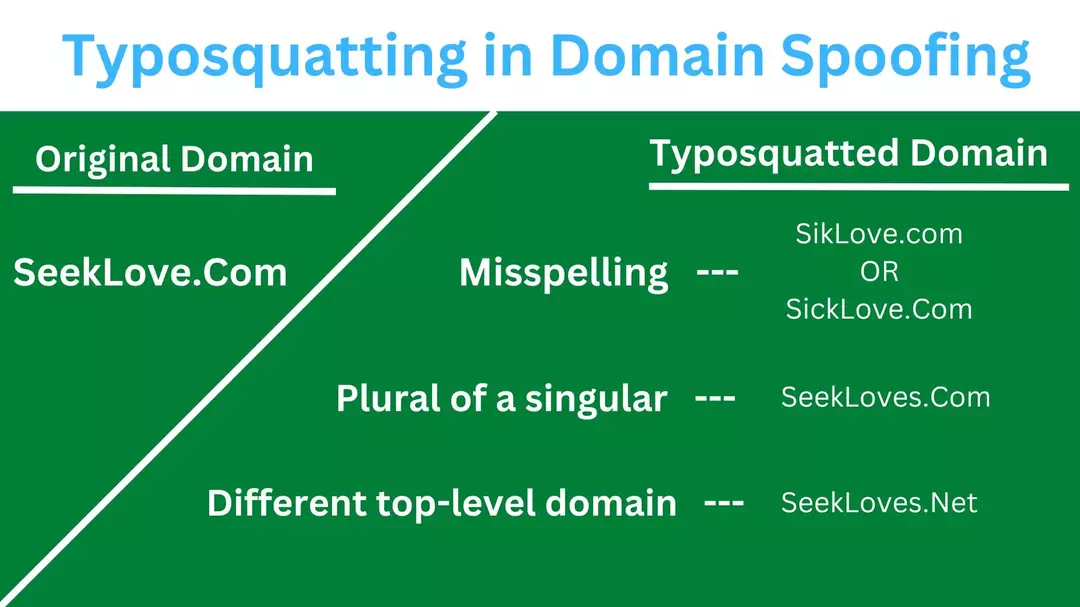
- The typo squatter’s URL will usually be one of five types, all similar to the victim site address:
- A common misspelling, or foreign language spelling, of the intended site
- A misspelling based on a typographical error
- A plural of a singular domain name
- A different top-level domain (i.e., .com instead of .org)
- Abuse of the Country Code Top-Level Domain (ccTLD) (.cm, .co, or .om instead of .com)
- Internationalized domain names homograph attack only because their spelling includes one or more characters that come from a different alphabet but look the same to the naked eye.
- DNS spoofing
- Website spoofing
- Email spoofing
And more…
Did you know about this before? Tell me in the comment section.
What is the definition of a fictitious domain name?
It isn’t registered to any actual organization or individual. It is often used in fiction or for online experimentation and development purposes.
For example,a movie or TV show might use a fictitious domain to represent a fake website or online business.
Also, the developer uses it to create a test environment with different configurations and settings.
The fictitious domain uses:
- People do not register fictitious domain names with a domain name registrar or recognize them by the DNS. As a result, they cannot access a website or any other online resource.
- It’s important to note that fictitious domain names can be confusing or misleading, especially when used to suggest they’re real or linked to a real organization.
- It is generally best to use fictitious domain names only for experimentation or entertainment and to avoid using them to deceive or mislead others.
- Their creators or cybersquatters often register domain names used in works of fiction in the DNS, looking to benefit from the situation.
The first registered domain names
Who registered the very first domain name? Any guesses?
It’s Symbolics Inc. by Aron Meystedt, who registered the first domain name.
When was the first domain name registered?
Symbolics Inc., a computer systems corporation in Cambridge, Massachusetts, registered the first commercial Internet domain name in the TLD com on March 15, 1985, symbolics.com.

Fewer than 15,000.com domains had been registered by 1992. Two hundred ninety-four million domain names were registered in the first quarter 2015.
Wikipedia Domain Name List shows the first 20 domains with their registration dates.
| Domain name | Registration date |
|---|---|
| symbolics.com | 15/03/1985 |
| bbn.com | 24/04/1985 |
| think.com | 24/05/1985 |
| mcc.com | 11/07/1985 |
| dec.com | 30/09/1985 |
| northrop.com | 07/11/1985 |
| xerox.com | 09/01/1986 |
| sri.com | 17/01/1986 |
| hp.com | 03/03/1986 |
| bellcore.com | 05/03/1986 |
| ibm.com | 19/03/1986 |
| sun.com | 19/03/1986 |
| intel.com | 25/03/1986 |
| ti.com | 25/03/1986 |
| att.com | 25/04/1986 |
| gmr.com | 08/05/1986 |
| tek.com | 08/05/1986 |
| fmc.com | 10/07/1986 |
| ub.com | 10/07/1986 |
| bell-atl.com | 05/08/1986 |
The domain has a different ending, which is known as TLD.
Let’s see which are those.
The Levels of Domain Names [Domain ending with TLDs, gTLDs, and ccTLDs]
Which is a domain name extension?
The TLD stands for Top Level Domain. It is also called Doman Name Extensions.
A hierarchical series of levels or categories organizes domain names, separated by periods (dots).
The highest level of a domain name is the top-level domain (TLD), which is the part of the domain name that appears after the final period.

TLDs are divided into generic TLDs (gTLDs) and country-code TLDs (ccTLDs). The top-level domains (TLDs) are the first level of domain names.
They include both generic top-level domains (gTLDs) such as [dot] com, [dot] info, [dot]net, [dot]edu, and [dot]org, as well as country code top-level domains (ccTLDs).
What are gTLDs?
The gTLD is a top-level domain name. The gTLD stands for “generic top-level domains.” Generally, you can also call it “domain name extensions.”
These TLDs are some of the most widely recognized and used. They aren’t specific to any particular country.
You can check these generic top-level domain lists…
- MyWebsite.com: commercial businesses; this is the most common
- MyWebsite.gov: Government agencies
- MyWebsite.edu: Educational institutions
- MyWebsite.org: Organizations (nonprofit)
- MyWebsite.mil: Military
- MyWebsite.net: Network organizations
These were the famous top-level domain examples.
A generic domain is a name that refers to a broad category rather than a specific or individual instance, such as an industry name rather than a firm name.
Flute[dot]com, books[dot]com, image[dot]com, and industry.com are some of the websites that you may visit. These kinds of generic domain names might be significant.
What are ccTLDs?
The ccTLDs stand for Country Code Top-Level Domains (ccTLD). Organizations and individuals generally use these TLDs, specific to a particular country based in that country.
Example for country domain list…
- MyWebsite[dot]us – USA
- MyWebsite[dot]ca – Canada
- mywebsite[dot]th – Thailand
- Mywebsite[dot]in – India
The ccTLDs are mainly used to target a specific country. Such as MyWebsite[dot]ca, which can mainly be used for Canada, [dot]uk (United Kingdom), and [dot]jp (Japan).
However, these domains can also be accessed in any country if they are not blocked for a particular country or other countries.
Verisign, New .com, and .net domain registrations totaled 10.7 million at the end of the third quarter of 2021, compared to 10.9 million domain registrations at the end of the third quarter of 2020.
You can also find more domain name endings.
The Second Level Of Domain Name
The second-level domain (SLD) is the part of the domain name that appears immediately before the TLD. People typically use the SLD to identify the specific organization or individual with the domain name.
For example, in the domain “example.com,” “example” is the SLD.
The Third Level Of Domain Name: SubDomain
You can use a third-level domain to identify subdomains or specific areas of a website. It’s optional.
For example, in the domain name “subdomain.example.com,” “subdomain” is the third-level domain.
So, in summary, the levels of a domain are organized from right to left, with the top-level domain being the highest level and the third-level domain being the lowest level.
The TLD and SLD are the most essential parts of a domain name, as they identify the type of website and the organization or individual that owns it.
So, these are the top-level domain examples.
What is a Fully Qualified Domain Name?
FQDN stands for Fully Qualified Domain Name, an absolute domain name.
It is a domain name that defines its specific position in the Domain Name System’s structure.
A fully qualified domain name (FQDN) is a complete domain that includes all levels of the domain hierarchy, from the top-level domain (TLD) down to the individual hostname.
All domain levels, including the top-level domain and the root zone, are specified.

Let’s understand with the fully qualified domain name example: in “en.wikipedia.com,” now here, “en” is the FQDN, specified for a specific path for the English language content.
Let’s understand with another example: since the FQDN is a specified path, it can be used as a mail server like mail[dot]mysite[dot]com, and “mail” is the hostname.
And it is hosted within the domain mysite[dot]com. “Mail” is a Fully Qualified Domain Name.
What is Domain Name Alias?
The domain alias serves the duplicate files on your main domain but with a different URL. You can have many domain names that point to the same website.
You may host a Web site on one domain and redirect additional domain names to it using domain aliasing.
Let’s understand with an example,
If a visitor visits FaceBook[dot]net, Facebook[dot]org, FaceBook[dot]us, or Facebook[dot]UK, they will see content from FaceBook[dot]com.
Even if visitors visit FB[dot]com, they will see the content from FaceBook[dot]com.

Why is an alias for a domain name used?
Because…
Extra domain names are commonly used for the following purposes:
- It helps to cover all of your domain names, like Example [dot]com, example[dot]net, example[dot]org, etc.
- It also ensures that people who mistype your domain can still reach you.
What are Registrant, Registrar, Registration, and Registry?
You might have been confused about the registrant, registrar, and registry.
So, let’s have a simple overview of these terms.
What is a Registrant?
A registrant is an individual or organization that registers a domain name with a domain name registrar. The registrant owns the domain and is responsible for maintaining the registration and renewing it before it expires.
In other words, a registrant is the registered holder of a domain. A registrant holds “rights” to a domain for the registration period.
You can renew a domain registration indefinitely for a maximum of ten years. The “owner” of a domain is its registrant.
Who OR What is a Domain Name Registrar?
A registrar is a company that the Internet Corporation accredits for Assigned Names and Numbers (ICANN) to register and manage domain names.
Registrars are responsible for verifying that the registered domain is available and then registering it on behalf of the registrant.
Also, register the domains with resale rights or for resale. Like, NameCheap, GoDaddy, BlueHost, etc., are domain registrars.
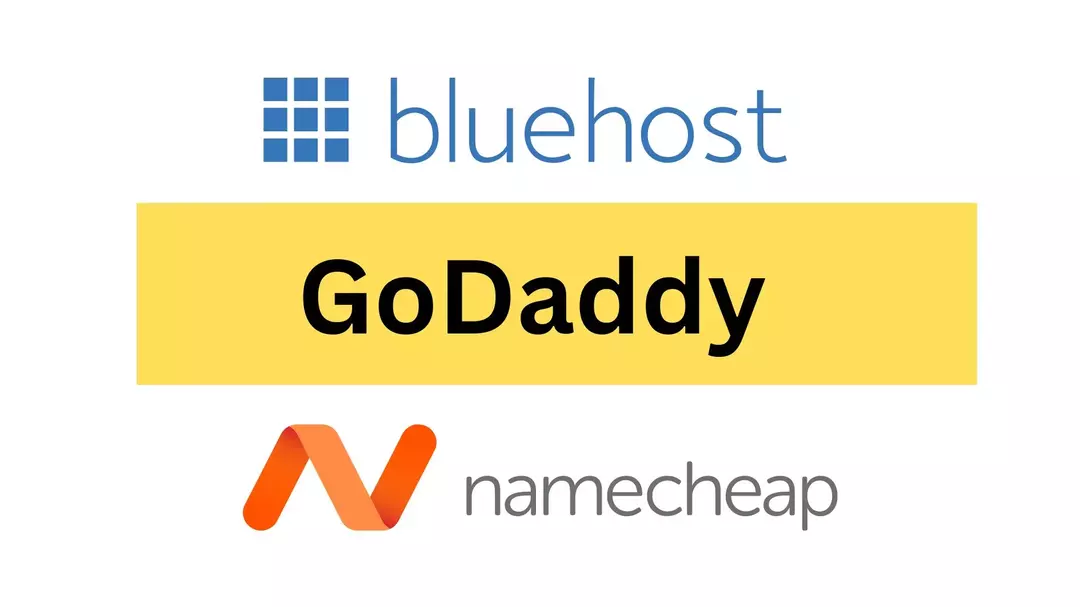
A registrar collaborates with a registrant, a domain owner, and a registry.
The registrars sell the domain names, provide the registration services, and also offer other value-added services applicable to domain names.
What is Domain Name Registration?
Domain Name Registration is acquiring a domain by purchasing it from a domain name registrar. In other words, the procedure by which a registrant registers a domain with a registrar is known as “registration.”
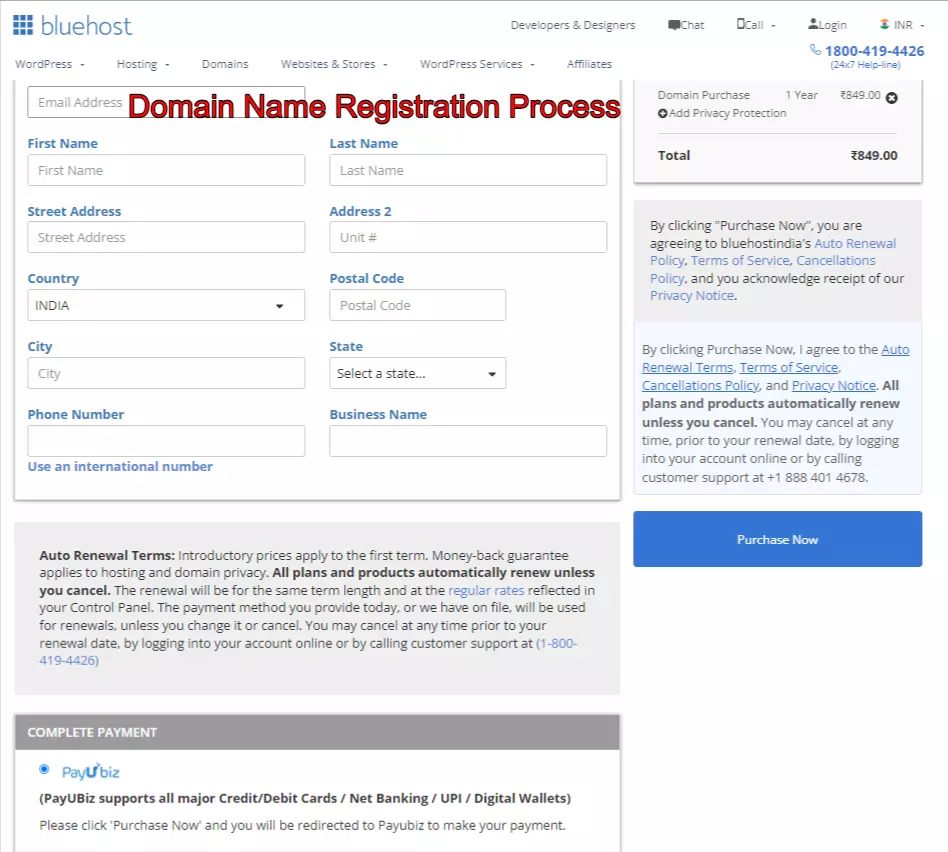
To register a domain name, you must choose an available name and then pay a fee to the registrar. The fee for a domain name varies depending on the TLD (top-level domain) you choose, with some TLDs costing more than others.
You can register a domain for one to ten years. When the registration period expires, the registrant can renew or extend it.
For inclusion in the WHOIS database, the registrant must submit contact information to the registrar.
What is a Domain Name Registry?
A registry is a database that stores the registered domain names and their associated information, such as the registrant’s contact details and the domain name’s expiration date.
The domain registrar maintains the registry and is used to manage and track the status of registered domain names.

Verisign, for example, is in charge of several top-level domains, including [dot]com, [dot]net, and [dot]name.
ICANN grants authority to a registry operator to operate a top-level domain.
Let’s summarize it quickly…
- A registrant is the owner of a domain name.
- A registrar is a company that registers and manages domain names.
- Registration is the process of acquiring a domain name.
- A registry is a database that stores all registered domain names and their associated information.
There may be confusion between the registrar and the registry, so let’s see in simple terms below.
What is the difference between Registrar and Registry?
Registrar: The Registrar is a company that oversees domain name registration for one or more Top-Level Domain (TLD) registries.
Registry: The registry manages the zone files, which include the addresses of the name servers for each domain, which is an institution that administers the administrative data for the TLD domains and subdomains under its jurisdiction.
The Internet Corporation for Assigned Names and Numbers (ICANN) is a nonprofit, private organization and the governing body for the Internet.
ICANN is responsible for the technical operation of the Domain Name System (DNS) and the policies that define how the names and addresses of the Internet work.
What is ICANN?
ICANN was established in 1998. ICANN is a non-profit organization made up of individuals worldwide dedicated to ensuring that the Internet remains secure, stable, and interoperable.
The organization promotes competition and develops policies regarding internet identifiers. ICANN does not control Internet content. It cannot stop spam, nor does it deal with internet access.
Nonetheless, it plays a crucial role in coordinating the Internet’s naming system, which affects the expansion and evolution of the Internet.
What is ICANN’s role?
The role of ICANN is to oversee the complex and interconnected network of unique identifiers that connect computers on the Internet.
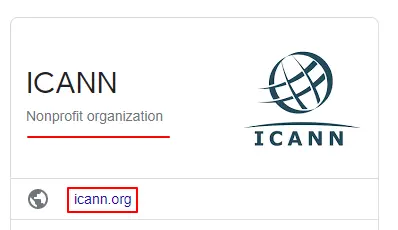
This is commonly referred to as “universal resolvability” and means that you receive the same predictable results wherever you are on the network.
Without it, you risk having an Internet that behaves differently depending on where you are on the globe. ICANN operates two organizations, InterNIC and IANA.
InterNIC: The Network Information Center (InterNIC) provides information about domain registration services.
IANA: The Internet Assigned Numbers Authority (IANA) is responsible for the DNS root, IP addressing, and other Internet protocol resources.
IANA delegated authority for all other (non-root) domains to other registries
What is the Whois database?
The WHOIS database stores information about domains such as the following:
- Registration contact information for the registrant, admin, and technical contacts
- Sponsoring registrar
- Creation, update, and expiration dates
- Name servers and domain statuses
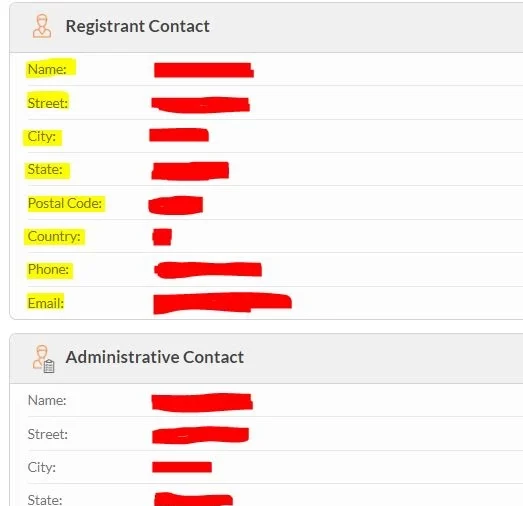
The user may or may not publish information stored in the WHOIS database based on their settings. The registry also controls which fields are visible.
What is the resource record and type?
Resource records detail the elements that make up your domain, like your web host or email provider.
Resource records ensure everything connects and the website functions properly when someone visits it or uses your domain name to send or receive emails.
Additionally, resource records can strengthen website security and validate domain ownership. When you add a resource record in the Domain Management System, you must complete the following fields:
- Host name
- Type
- Time-To-Live (TTL)
- Data
- [A, AAAA, CNAME are the Web Hosting Records]
- [MX and SPF are the Email records.]
- [NS and SOA are the nameservers records]
- [CAA, DS, PTR, SSHFP, and TLSA are the security records], and there are also other record types like TXT, etc.
Uniform Domain Name Dispute Resolution Policy[UDRP]
About UDRP
The Internet Corporation for Assigned Names and Numbers (ICANN) created the Universal Domain-Name Dispute-Resolution Policy (UDRP) in 1999 to handle conflicts with domain names.
Instead of going through a stretched and expensive court process, the UDRP offers a quick and affordable option for resolving disputes with domain names.
What is UDRP?
The UDRP is a set of guidelines and processes created to settle disputes over domain names. It enables a trademark owner to complain about the third-party registered domain name that they claim infringes on their trademark rights.
UDRP covers All the top-level domains (TLDs), including [dot]com, [dot]org, [dot]net, and others.
How does UDRP Work?
The UDRP process starts when the owner of a trademark files a complaint with an approved dispute resolution service provider.
Include the in-issue domain name, proof of the trademark, and evidence of malicious use in your complaint.
The dispute resolution service provider will notify the domain name registrant and allow them to respond to the complaint.
The registrant can choose to respond to the complaint or not. If they respond, they can provide evidence that the domain name was registered in good faith and is being used legally.
The dispute resolution service provider will then weigh both sides of the argument and decide based on the evidence presented.
If the dispute resolution service provider favors the trademark owner, the domain name will be transferred to the trademark owner’s control. If the decision is in the registrant’s favor, the domain name will remain under their control.
Benefits of the UDRP
The UDRP has several benefits for trademark owners, registrants, and the wider online community. Some of these benefits include:
- Cost-effective: Because the UDRP process is less expensive than going to court, it is more accessible to small businesses and individuals.
- Efficient: The UDRP process is designed to be efficient, with decisions usually made within 60 days.
- Global: The UDRP applies to all TLDs, making it an international policy for resolving disputes related to domain names.
- Non-adversarial: The UDRP process is non-adversarial, intending to resolve disputes amicably.
The Uniform Domain-Name Dispute-Resolution Policy (UDRP) intends to resolve domain-name disputes in a streamlined and cost-effective manner.
It provides a fair and efficient process for resolving disputes related to domain names, benefiting both trademark owners and registrants. You check the principal documents required, the Information on Proceedings Commenced Under the Policy, and more information.
Before purchasing a domain for your business, you must consider the critical factors in picking a domain name that will save you from legal and other issues in the future.
Then, purchase a domain name with the best domain name registrar.
(Tip: You can also buy a domain name forever.)
Also, you should secure your domain name, and then you can connect a domain name with hosting.
You can also transfer a domain name from one domain registrar to another. You can also sell a domain name if you do not want to continue.
Wrapping Up
So that’s my ultimate guide to the domain name.
I want to turn it over to you: What did you think about this guide? Or maybe there’s something I missed.
Which part of this guide do you find interesting?
Let me know by leaving a comment below.

![how-to-buy-a-domain-name-SoftKeyword[dot]com](https://softkeyword.com/wp-content/uploads/2022/03/how-to-buy-a-domain-name-SoftKeyworddotcom-1024x576.webp)
My programmer is trying to persuade me to move to .net from PHP.
I have always disliked the idea of it because of the expenses.
But he’s trying none the less. I’ve been using WordPress on a number of websites for about
a year and am concerned about switching to another platform.
Is there a way I can transfer all my wordpress posts
into it? Any help would be really appreciated!
Switching from WordPress is not a good idea. Instead you can create a fresh site for that.
Hello there, I just became alert to your blog through Google, and I found that it is truly informative. I am gonna watch out for Brussels.
I will appreciate if you continue this in the future. Many people will be benefited from your writing. Cheers!
Thanks, Cooper.
When I initially commented, I clicked the Notify me when new comments are added checkbox. Every time a comment is added, I receive four emails with the same comment. Perhaps there is a way you can remove me from that service? Thanks a lot!
Your issue is successfully resolved, Zara.